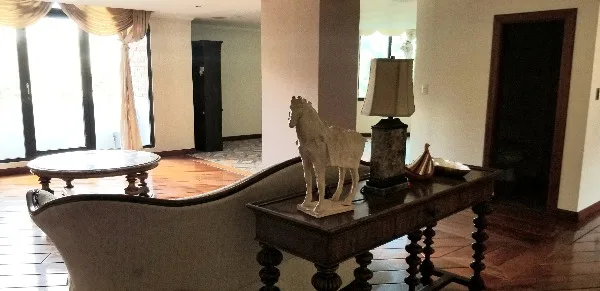Foreign real estate assets generate profits as well as serve as a hedge against volatility of the U.S. economy
By Lief Simon
With the U.S. stock market behaving like a ride at Coney Island this week, real estate investors have reason to feel pretty good about themselves.
As I write, the Dow Jones Industrial Average sits at essentially the same value as at the beginning of this year. However, its volatility, especially over the last week, has been spectacular.
By comparison, real estate investing (unless you’re using leverage) is slow and steady. Stock investor friends make fun of my annual rental yield targets. If I’m netting 5% to 8% per year from my rental investments, I’m happy. Friends who prefer stocks try to tempt me by bragging about their big hits. I stay the course.
We property investors can see big hits, too. I’ve earned better than 12% net per year for eight years running from one rental property I own in Panama City, for example. And I’ve bought and sold to realize annualized returns of 30%, 40%, 50% and more.
Yes, the U.S. stock market did gangbusters last year. However, over decades, it has returned between 8% and 10% annually, depending on which statistics you follow.
Of course, property prices can go down as well as up, just like stock values. We saw big downturns around the world between 2008 and 2012, and some markets remain down from pre-2008 highs. However, real estate markets in general are less volatile than stock markets and require less day-to-day attention.
Real estate as an investment has other advantages over stocks, as well. Important for me is that real estate is an asset you control.
I explained that my target for rental return is a 5% to 8% per year net. That’s a reasonable expectation in most markets. However, you can do better in certain markets or with certain kinds of properties by adjusting your asset, something that is impossible with a stock holding.
In some markets, you can boost your annual yield above 8% by making your property available for short-term rather than long-term rental. Short-term rentals require more effort and more management, which is why rental managers charge higher fees to manage short-term properties. However, even allowing for those higher fees, a short-term property can break through the 8% net threshold in a good market.
I began paying attention to the property market in Medellin, Colombia, about six years ago. At that time, it was possible to earn as much as 20% per year from a well-located rental in this city. That’s an anomaly (like a big spike in a stock price). You can’t expect those kinds of returns to last, and they didn’t in Medellin. Over the past half-dozen years, rental and occupancy rates in Medellin have held up, but property prices have increased. Six years ago, you could buy an apartment for the equivalent of US$100,000 and earn US$20,000 per year in income renting it out. Today, you’d still be getting the same US$20,000 per year (or maybe a little more) in rental income, but that apartment might be worth US$180,000, bringing the yield on the current value closer to the long-term normal of 8%
Another way to boost usual yields to more exciting levels is with the help of leverage. This isn’t possible in most foreign markets, but it is in some. I bought an apartment in Panama City using local financing. At one point and for more than two years, that apartment earned more than 20% cash-on-cash net yields from rental income after all expenses, including the mortgage. That’s the kind of boost you can get with leverage.
Without the leverage, my net yield at that time would have been 13% on the original investment, still nicely above my target range.
Where could you buy today for rental yields of 10% net or more? In Cayo, Belize, which is the fastest-growing market in this country. Finally, tourists and retirees are discovering what Belize has to offer beyond Ambergris Caye and Placencia, two much more developed rental markets.
Cayo is an emerging destination with the attendant accommodation challenges. It’s possible in this part of this country to enjoy a five-star jungle lodge experience, for which you’ll pay international-level prices. And it’s possible to stay with the backpackers in any of a handful of hostel-like hotels, which are a bargain. You have no real option in between other than renting a small house. Thus the expanding demand for small, furnished houses…and the investor opportunity.
You could act on this opportunity by buying a two-bedroom house at a cost of, say, US$70,000, that would make an ideal short- or mid-term rental for a tourist or a snowbird retiree. Rent it monthly for US$1,000 or weekly for US$250 to US$500. Renting on a monthly basis, you’d earn US$12,000 per year, or about 17% gross. Back out management expenses and factor in vacancies, and you could still be looking at a double-digit annual yield.
Of course, buying and setting up a rental property offshore isn’t as easy as calling your broker to make a stock trade, and you can’t make the purchase decision on the basis of an Internet search (at least I don’t recommend it). Unless you know a market well from past experience, you’ll have to get on a plane.
Regardless, holding cash-flowing properties outside the United States is a top hedge against both the U.S. economy and the U.S. stock market.
Plus you won’t feel like throwing up in the middle of the ride.
Credit: Live and Invest Overseas, www.liveandinvestoverseas.com


















